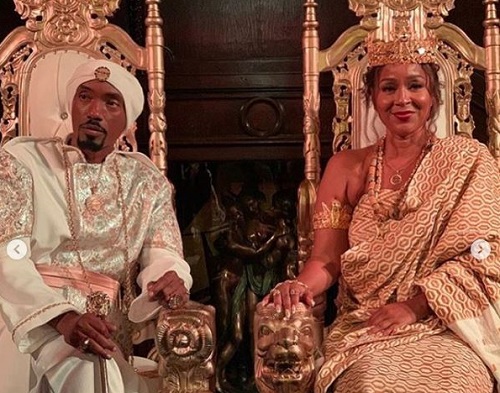Another Colored Blog
Yep. This is another blog about the movie For Colored Girls. Get used to it. Between now and January you’re going to see a lot of them out there in the blogosphere.
The movie has received mixed reviews, but for the most part, the consensus is that it is amazing. Prior to watching the film, I saw an obviously taken Tony Harris fawn over Kimberly Elise during her CNN interview with him. He posed a question, one I am sure most of the prolific actresses in the film have been asked: “Did you have to draw on any personal experiences to get into the character of the film?” Ms. Elise answered in the negative. Fortunately, her life has been blessed in keeping her from that type of abuse and horror. He then asked if men would be subjected to two and a half hours of male bashing. Her answer was brilliant.
“This is a movie about women. And you can’t tell a story about women without including men.”
Too true. The lives of women and men are indeed irrevocably intertwined. The mood surrounding the film put me in the mind of The Color Purple which came out over 20 years ago. Here again, Black men were being stereotyped or victimized as ‘the villain’. That being said, has anyone asked the actors – i.e. the male cast members – of Colored Girls if they had to draw on real life experiences to play their roles?
Just as every woman knows someone who has been sexually/physically assaulted; dumped by a man for another woman after she’s given him her best; lied and cheated on by a man living on the down low; had an out of control friend who craved sex in consolation for comfort or companionship; or has been left scared and uncertain after going through an abortion after an unplanned, ill-timed pregnancy – surely every MAN knows a perpetrator of these crimes. Perhaps he has been a perpetrator himself. As a Black male actor, how must it feel to play the bad guy? To play the role of every woman’s worst nightmare…colored or not? And what did you have to see or do to prepare for that?
After watching the movie, I asked myself the same question I did back in 1986 when I first saw The Color Purple: Is this life imitating art or vice versa? (OK. I lie. I was only 8, so what I really asked myself is “Oh dear God! Is this for real? Do people really act this way?” Which is kinda the same thing. ) I still don’t know if the level of villainy in Colored Girls is art or life, but what I do know that it is truth. And the truth is none of these issues – none of the crimes – have a single color assigned to them.
Asian men rape their women.
Hispanic men beat their wives in a drunken rage.
White guys murder their kids.
Yes, Black men are on the down low…with men of many other races.
The face of incest is Native American as well as Indian.
So yeah. I’d really like to know: What experiences did these men have to draw on to make their characters so real? Because in my own community, we had 72% of all children born out of wedlock (and that means no dad to actively participate in raising them); we constitute 49% of all abortions; our women experience intimate partner violence at a rate 35% higher than that of white women and 22 times that of other races; and we account for nearly half of all new HIV infections in all 50 states.
Little boys grow up witnessing and mimicking what they see.
We have to change this culture that says this is okay. It’s long past time for men to stand up and be men, so that one day I can say that the fodder of Colored Girls is relegated to the stuff of art.





